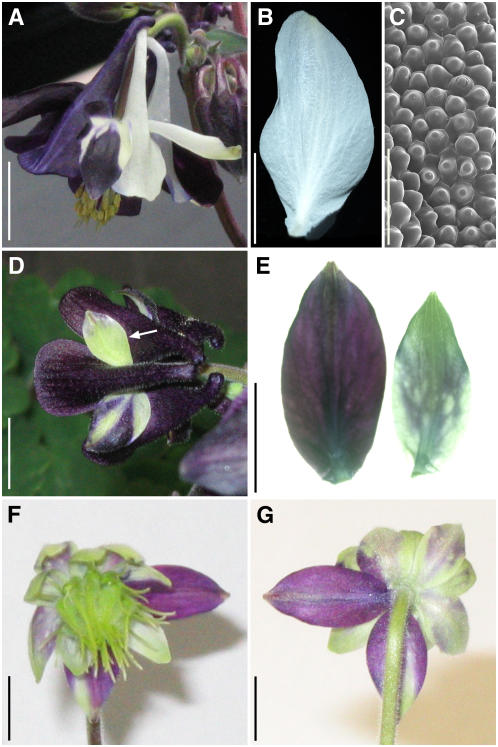Figure 8.
Sepal Phenotypes in Flowers Treated with TRV2-AqvANS or TRV2-AqvPI-AqvANS.
(A) A flower showing silencing in response to treatment with TRV2-AqvANS.
(B) A single AqvANS-silenced sepal.
(C) Scanning electron microscopy image of the adaxial epidermis of an AqvANS-silenced sepal.
(D) A flower showing patchy silencing in response to treatment with TRV2-AqvPI-AqvANS. Note the small, green sepal (arrow).
(E) Sepals from the same whorl of a single flower with partial AqvPI-AqvANS silencing. Note the size difference between the unsilenced (left) and silenced (right) organs.
(F) and (G) Front (F) and back (G) views of a flower showing strong AqvPI-AqvANS silencing. Two first whorl organs are relatively unsilenced and show distinct expansion patterns relative to the more strongly silenced organs.
Bars = 10 mm in (A), (B), and (D) to (G) and 100 μm in (C).

